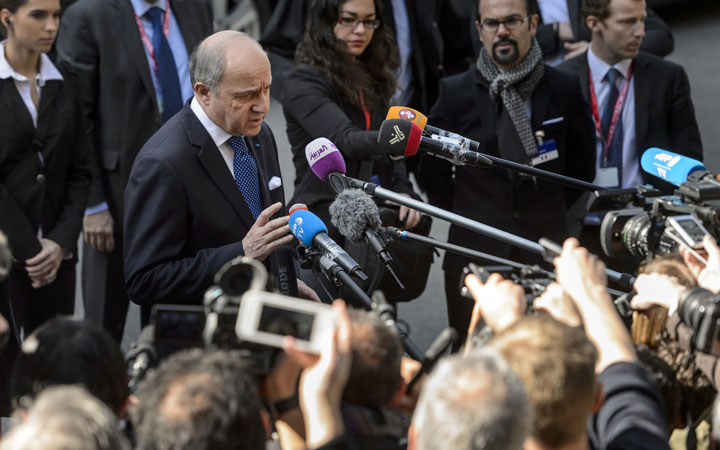LAUSANNE, Switzerland – Negotiations over Iran’s nuclear program picked up pace on Saturday with the French and German foreign ministers joining U.S. Secretary of State John Kerry in talks with Tehran’s top diplomat ahead of an end-of-March deadline for a preliminary deal.

With just four days to go until that target, negotiators in the Swiss town of Lausanne settled in for another round of lengthy sessions that they hope will produce an outline of an agreement that can become the basis for a comprehensive deal to be reached by the end of June.
Iranian negotiator Majid Takht-e Ravanchi denied a news report that the sides were close to agreement, and other officials also spoke of remaining obstacles.
READ MORE: Iranian foreign minister: Nuclear talks on track, although Yemen being discussed
French Foreign Minister Laurent Fabius told reporters as he arrived that the talks have been “long and difficult. We’ve advanced on certain issues, not yet enough on others.”
Iranian nuclear agency chief Ali Akbar Salehi described one or two issues as becoming “twisted.” He told Iran’s ISNA news agency that the sides were working to resolve the difficulties.
Kerry met early in the day with Iranian Foreign Minister Mohammad Javad Zarif, ahead of talks with Fabius and Germany’s Frank-Walter Steinmeier. The foreign ministers of Russia, China and Britain also were expected in Lausanne over the weekend.
READ MORE: Kerry heads for new round of nuclear talks with Iran with deadline looming
Diplomats at the talks said their presence does not necessarily mean a deal is almost done.
Steinmeier avoided predictions of an outcome, saying only that a nuclear deal could help ease Mideast tensions.
“The endgame of the long negotiations has begun,” he said.
Iran says its nuclear ambitions are purely peaceful; other nations fear it is seeking to develop weapons.
Progress has been made on the main issue: the future of Iran’s uranium enrichment program. It can produce material for energy, science and medicine but also for the fissile core of a nuclear weapon.
The sides tentatively have agreed that Iran would run no more than 6,000 centrifuges at its main enrichment site for at least 10 years, with slowly easing restrictions over the next five years on that program and others Tehran could use to make a bomb.
The fate of a fortified underground bunker previously used for uranium enrichment also appears closer to resolution.
Officials have told The Associated Press that the U.S. may allow Iran to run hundreds of centrifuges at the Fordo bunker in exchange for limits on centrifuge work and research and development at other sites. The Iranians would not be allowed to do work that could lead to an atomic bomb and the site would be subject to international inspections.
Instead of uranium, any centrifuges permitted at Fordo would be fed elements used in medicine, industry or science, the officials said.
Even if the centrifuges were converted to enrich uranium, there would not be enough of them to produce the amount needed to make a weapon within a year – the minimum time frame that Washington and its negotiating partners demand.
A nearly finished nuclear reactor would be re-engineered to produce much less plutonium than originally envisaged.
Still problematic is Iran’s research and development program.
Tehran would like fewer constraints on developing advanced centrifuges than the U.S. is willing to grant.
Also in dispute is the fate of economic penalties against Iran.
In addition, questions persist about how Iran’s compliance with an agreement would be monitored.
Fabius suggested that France was not yet satisfied on that point.



Comments